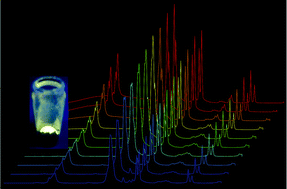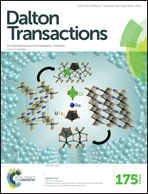Dopant and excitation wavelength dependent color tunability in Dy3+:YVO4 and Dy3+/Eu3+:YVO4 microparticles towards white light emission†
Abstract
In this study, we investigated the dopant and excitation wavelength color tunability of several Dy3+:YVO4 and Dy3+/Eu3+:YVO4 samples with the aim of obtaining white light emission. The materials were prepared in a hydrothermal synthesis in the presence of glycerol and resulted in microsized particles. Although white light can be obtained through choosing an appropriate doping percentage of Dy3+ in this material, yet by co-doping appropriate amounts of Dy3+ and Eu3+ into the YVO4 matrix a warmer tone of white light (with yellow under tone) can be achieved. Despite the fact that both the as obtained and heat treated materials were of the pure YVO4 phase when doped they showed differences in their luminescence properties. We show that also by adjusting the excitation wavelength slight changes in the emitted color of the doped and co-doped materials can be obtained. Additionally a detailed analysis of the Dy3+/Eu3+:YVO4 co-doped samples revealed that energy is not transferred from the V–O charge transfer band independently to both Eu3+ and Dy3+ instead a V–O → Dy3+ → Eu3+ energy transfer takes place. A nonradiative energy transfer between the Dy3+ and Eu3+ ions is proposed.



 Please wait while we load your content...
Please wait while we load your content...